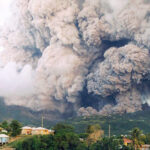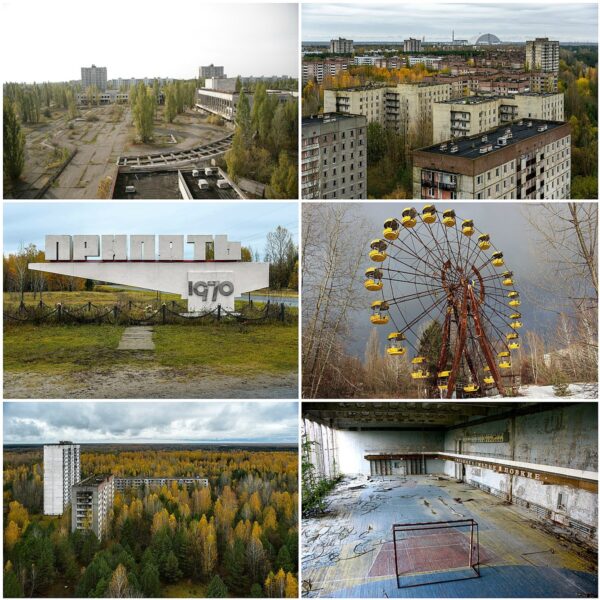
- The History of Chernobyl: Understanding the Nuclear Disaster
- Exploring the Abandoned Structures of Chernobyl
- The Impact of Radiation on Chernobyl's Environment
- Life After Evacuation: The Human Cost of Chernobyl
- Chernobyl Today: A Ghost Town Frozen in Time
- The Legacy of Chernobyl: Lessons Learned from the Nuclear Tragedy
Chernobyl, once a thriving city in the Soviet Union, now stands as a haunting reminder of the catastrophic nuclear disaster that occurred in 1986. The area surrounding the Chernobyl Nuclear Power Plant was left in disarray, with its residents evacuated and the city abandoned, creating an eerie silence that echoes through its deserted streets.
The story of Chernobyl: The Abandoned City Ravaged by Radiation is not just about the immediate aftermath of the explosion, but also about the long-lasting effects of radiation on both the environment and human health. Today, it serves as a poignant symbol of the dangers associated with nuclear energy and the resilience of nature reclaiming what was once lost.
The History of Chernobyl: Understanding the Nuclear Disaster
The Chernobyl disaster of April 26, 1986, marked a pivotal moment in nuclear history, when Reactor No. 4 at the Chernobyl Nuclear Power Plant in Ukraine exploded during a safety test gone wrong. This catastrophic event released a significant amount of radioactive particles into the atmosphere, leading to widespread contamination across Europe. The immediate area, particularly the town of Pripyat, was evacuated within days, sealing the fate of the city and its inhabitants.
In the aftermath of the disaster, the Soviet Union faced immense challenges in managing the crisis. A dedicated group of firefighters and plant workers, often referred to as the "liquidators," worked tirelessly to contain the fire and limit radiation exposure. Their efforts, while crucial, resulted in many suffering from acute radiation syndrome and other long-term health issues. The long-term impact of the disaster on public health continues to be studied and debated globally.
The legacy of Chernobyl is not only a tale of human error and environmental disaster but also a profound lesson on the importance of nuclear safety. Key lessons from the incident include:
- Importance of rigorous safety protocols in nuclear plants.
- Need for transparent communication during crises.
- Development of effective emergency response strategies.
Today, the Chernobyl Exclusion Zone stands as a testament to the resilience of nature and the enduring consequences of human actions. Abandoned buildings are now overgrown with vegetation, demonstrating how life can reclaim spaces once dominated by humanity. The site serves as a stark reminder of the risks associated with nuclear energy and the profound effects of radiation on both the environment and human health.
Exploring the Abandoned Structures of Chernobyl
Exploring the abandoned structures of Chernobyl offers a glimpse into a world frozen in time. As you wander through the empty streets of Pripyat, remnants of daily life remain, from decaying schools to deserted amusement parks. Each building tells a story, showcasing the stark contrast between human ingenuity and nature's ability to reclaim space. The eerie atmosphere is intensified by the silence that envelops these sites, inviting reflection on the events that led to their abandonment.
Among the most notable structures are:
- Pripyat's Ferris Wheel: Once a symbol of joy, now a haunting reminder of lost lives.
- Lenin Square: The central hub of the city, now eerily empty.
- The Hospital: An essential facility during the disaster, now in ruins and overtaken by nature.
The decay of these buildings is a testament to the relentless passage of time, where nature intertwines with human artifacts. Crumbling walls are covered in moss, and trees burst through windows, illustrating how life persists even in the face of disaster. This juxtaposition creates a poignant landscape, reminding visitors of both the fragility and resilience of life.
While exploring these structures, it is crucial to acknowledge the risks of radiation exposure. Guided tours often emphasize safety protocols to ensure that visitors experience this ghost town without compromising their health. As you stand amidst the remnants of Chernobyl, the echoes of the past serve as a powerful reminder of the catastrophic nuclear disaster and its enduring legacy.
The Impact of Radiation on Chernobyl's Environment
The impact of radiation on Chernobyl's environment is profound and multifaceted. Following the disaster, large areas of land became uninhabitable due to contamination, leading to a significant loss of biodiversity. As radiation levels persisted in the soil and water, ecosystems were disrupted, resulting in shifts in species populations and behaviors. Such changes underline the long-term consequences of nuclear accidents on local flora and fauna.
In the years that followed the incident, scientists observed various adaptations in wildlife within the Chernobyl Exclusion Zone. For example, some species demonstrated increased mutations, while others thrived in the absence of human interference. The resilience of nature is evident, but it raises important questions about the future of these ecosystems. Key observations include:
- Increased populations of certain wildlife, such as wolves and deer.
- Higher mutation rates in smaller species, particularly insects.
- Changes in plant diversity, with some species flourishing in contaminated areas.
The long-lasting effects of radiation also affect soil health and water quality in the region. Contaminated soils can lead to further ecological imbalances, impacting the growth and survival of plants. Moreover, radionuclides can leach into groundwater, posing risks to any potential future human activity or natural proliferation of life in the area. A comparative analysis of soil samples taken over the years has shown:
| Year | Radiation Level (µSv/h) | Flora Diversity Index |
|---|---|---|
| 1986 | 500 | Low |
| 1996 | 50 | Medium |
| 2021 | 10 | High |
Despite the radiation, the environment around Chernobyl has begun the process of reclamation. Studies indicate that as radiation levels decrease, many species are returning, and ecological balance is slowly reestablishing itself. This complex relationship between radiation and the environment offers crucial insights into both the dangers of nuclear energy and the extraordinary adaptability of life.
Life After Evacuation: The Human Cost of Chernobyl
After the evacuation of Chernobyl, the human cost became painfully evident. Families were uprooted from their homes, leaving behind not only their possessions but also their sense of security and community. The psychological toll was immense, with many survivors suffering from post-traumatic stress disorder (PTSD) and anxiety as they grappled with the uncertainty of their future and the loss of loved ones.
In addition to emotional scars, the health consequences of radiation exposure have been significant. Many evacuees experienced increased rates of thyroid cancer and other radiation-related illnesses, leading to ongoing struggles with healthcare access and treatment. The long-term effects of the disaster highlight the complexities of recovery, as survivors often face:
- Chronic health issues requiring continuous medical care.
- Social stigma associated with radiation exposure.
- Challenges in rebuilding their lives and communities.
The Chernobyl disaster also caused a generational impact, as children born after the incident were found to have higher vulnerability to health issues. These children, often referred to as "Chernobyl's children," represent a community that continues to cope with the legacy of the disaster. Initiatives aimed at providing support and education are crucial for helping these youths navigate the challenges imposed by their environment.
Ultimately, the human cost of Chernobyl extends far beyond the immediate crisis. It serves as a poignant reminder of the profound and lasting effects of nuclear disasters on individuals, families, and entire communities, emphasizing the need for vigilance in nuclear safety and disaster preparedness.
Chernobyl Today: A Ghost Town Frozen in Time
Chernobyl today stands as an eerie ghost town, a stark reminder of the tragedy that unfolded in 1986. With its once-bustling streets now silent and overgrown, the city remains largely untouched, frozen in time. Visitors who venture into the Chernobyl Exclusion Zone find themselves amidst dilapidated buildings, nature reclaiming its space, and an atmosphere thick with history and a sense of loss. This haunting environment serves as a powerful testament to the catastrophic impact of human error and the enduring nature of the land.
Despite the dangers of radiation, Chernobyl has transformed into a unique ecological refuge. The absence of human activity has allowed various wildlife species to flourish, illustrating a remarkable resilience in the wake of disaster. Researchers have observed significant changes in the area’s biodiversity, with some animals, such as wolves and bears, thriving in the abandoned landscape. This unexpected resurgence of life highlights how nature can adapt and recover, even in environments heavily impacted by radiation.
The remnants of everyday life scattered throughout Chernobyl bear witness to the lives interrupted by the disaster. Iconic locations such as the abandoned amusement park and empty schools evoke a sense of nostalgia and tragedy. Each site holds a story, reminding visitors of a vibrant community that once thrived there. These places, now enveloped in silence, encourage reflection on the fragility of human existence and the lasting implications of our actions.
As the years pass, Chernobyl continues to serve as a critical focal point for discussions on nuclear safety and environmental stewardship. The lessons learned from this disaster are invaluable, underscoring the importance of vigilance in managing nuclear technology. Chernobyl remains not only a historical site but also a powerful reminder of the need for responsible action in the pursuit of energy and technology, ensuring that such a tragedy is never repeated.
The Legacy of Chernobyl: Lessons Learned from the Nuclear Tragedy
The legacy of Chernobyl is a stark reminder of the profound consequences of nuclear accidents. Above all, it highlights the necessity for stringent safety measures in nuclear energy production. The disaster catalyzed global reforms, ensuring that future nuclear facilities adhere to enhanced protocols to prevent similar catastrophes. This emphasizes that learning from past mistakes is crucial to safeguarding human life and the environment.
Furthermore, the Chernobyl disaster has underscored the importance of effective communication in crises. The initial response was marred by misinformation, contributing to public panic and mistrust. Today, clear and transparent communication strategies are vital during emergencies, allowing for better public understanding and cooperation. This lesson is applicable not only in nuclear incidents but across various fields where crisis management is essential.
Additionally, the incident has instigated advancements in emergency response protocols. The need for well-coordinated responses to nuclear emergencies has led to the establishment of comprehensive training programs for first responders. These initiatives are designed to equip them with the skills needed to handle hazardous situations, ensuring that they can effectively protect public safety in the event of a nuclear incident.
Ultimately, Chernobyl serves as an enduring case study that reinforces the need for ongoing vigilance in the realm of nuclear energy. As societies continue to explore the potential of nuclear power, the lessons learned from Chernobyl remain a critical component in shaping safer practices and policies. This legacy is a call to action for future generations to prioritize safety, communication, and preparedness in the quest for energy solutions.
 What Currency is Used in Montserrat? Your Guide to Money Matters on the Island
What Currency is Used in Montserrat? Your Guide to Money Matters on the Island Essential Tips: What You Need to Know Before Going to Montserrat
Essential Tips: What You Need to Know Before Going to Montserrat The Enigmatic Tale: Unveiling the Mysteries of Montserrat Monastery
The Enigmatic Tale: Unveiling the Mysteries of Montserrat Monastery Uncovering the Tragic Toll: How Many Died in the Montserrat Eruption?
Uncovering the Tragic Toll: How Many Died in the Montserrat Eruption? The Enigma of Montserrat's Ghost Town: Unraveling Its Mysteries
The Enigma of Montserrat's Ghost Town: Unraveling Its Mysteries Finding the Enigma: The Quest for the World's Largest Ghost Town
Finding the Enigma: The Quest for the World's Largest Ghost TownIf you want to know other articles similar to Chernobyl: The Abandoned City Ravaged by Radiation you can visit the category WHERE YOU CAN GO.
Deja una respuesta










Read more!